Phonics Teaching Resources
Make teaching phonics easy with printable phonics worksheets, activities, games and more designed for elementary ELA and ELAR teachers.
This collection of curriculum-aligned teaching resources has been carefully reviewed by our expert teaching team to make sure every resource is classroom-ready — so we can make your lesson planning easier!
New to teaching phonics, or just looking for new ways to engage your students? Read on for a primer from our teacher team!
What Is Phonics?
You've likely heard the word "phonics" thousands of times throughout your own education and maybe on one of those old as from the '90s. But what is phonics, exactly?
Phonics is technically defined as the systematic instruction of the relationships between letters and sounds in written language. But that's a mouthful, isn't it? More simply, phonics is the word we use to refer to the method of teaching reading by focusing on the relationship between written letters and the sounds they represent.
In phonics, kids learn how to decode written words by recognizing the sound-symbol correspondence.
Phonics vs. Phonemic Awareness
When we start talking about letters and their sounds, we start to wander into phonemic awareness territory. So what's the difference?
The words phonics and phonemic are similar, and the two concepts are — surprise, surprise — related. But there are key differences.
Phonemic awareness is essentially the ability to identify and manipulate individual sounds — aka phonemes — in spoken language. It's those individual sounds and their correspondence to the letter symbols that can be used by kids to then decode written words.
So students learn to recognize the individual sounds of spoken language (phonemes) and how these sounds can be represented by letters (graphemes) in written language. Then they apply this knowledge to decode written words by understanding the sound-symbol correspondence.
Consider this example:
- Let's say your student can identify the separate sounds in a spoken word such as "cat" (i.e., /k/ /a/ /t/). That's phonemic awareness.
- Now let's say you're teaching that same student that the letter "c" represents the /k/ sound and that the letter "a" represents the /a/ sound, and that these sounds combine to form the word "cat." That's phonics!
How to Teach Phonics
OK, you probably already know that phonics is all about teaching word recognition via grapheme-phoneme associations and letter-sound correspondences.
It’s a means of teaching early readers the pieces that make up a word so they can blend them together to decode the English language as readers and writers.
But how do you teach it?
In the earliest stages, phonics instruction typically begins with teaching students the most common letter-sound relationships. You start with consonants, then move on to vowels, then consonant blends.
Students then learn to sound out words by decoding the letters and blending the sounds together to form words.

Phonics Vocabulary Terms
The English language system is one of the hardest to teach and learn, so how do you teach phonics? Let’s start with the phonics vocabulary.
- For starters, there are 26 letters that create approximately 44 phonemes, the word for the individual speech sounds that make up words. Put together, phonemes make words. OK, easy enough, right?
- Well, these phonemes can be written in over more than 200 different letter combinations, known as graphemes. Graphemes can be made up of 1 letter (such as “p” in “pig”), 2 letters (such as “gh” in ghost), 3 letters (such as “igh” in night), or 4 letters (such as “ough” in rough).
- Then there are digraphs or two letters that work together to make one sound — such as “ph” in graph. But wait, isn’t that a grapheme? Yup, a digraph is a type of grapheme.
- So is a trigraph, trigraphs, aka three letters that work together to make one sound, such as “dge” in edge.
- And if you’re teaching phonics, you can’t forget dipthongs, the name for a sound that is formed by the combination of two vowels in a single syllable, such as “ou” in loud.
Most students will spend kindergarten, first, and even second grade getting a handle on all phonics elements!
- Plus Plan
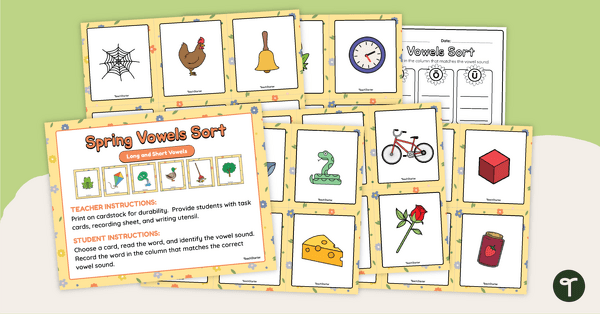
Spring Short and Long Vowel Sort
Practice distinguishing short and long vowels with a Spring-themed short and long vowel sorting activity.
- Plus Plan
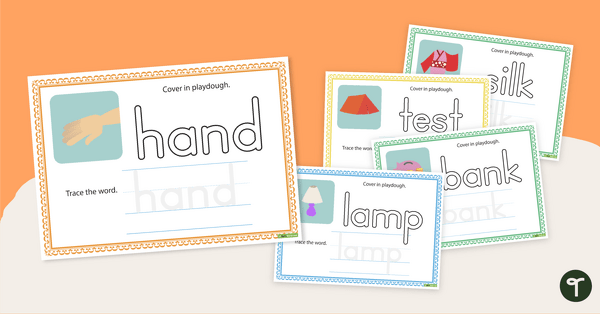
CVCC and CCVC Words – Playdough Mats
Print and use these 27 Kindergarten sight word playdough mats to "squish" in a bit of fine motor fun.
- Plus Plan
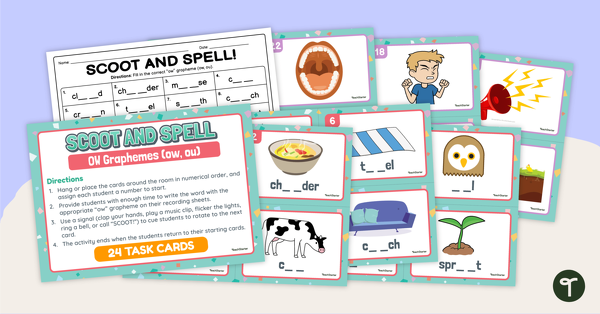
OW Sound Spelling Patterns- SCOOT! Task Cards
Explore words containing spelling patterns that make the "ow " sound with a game of SCOOT!
- Plus Plan
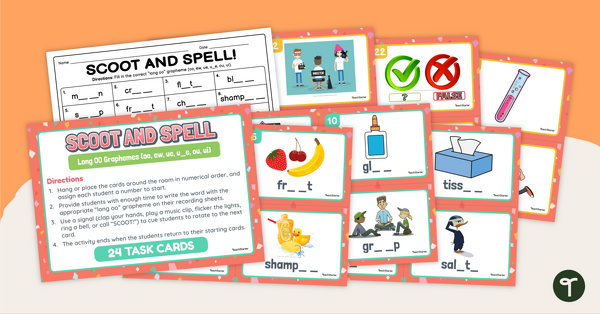
Long OO Spelling Patterns - SCOOT! Task Cards
Explore words containing spelling patterns that make the “long oo” sound with a game of SCOOT!
- Plus Plan
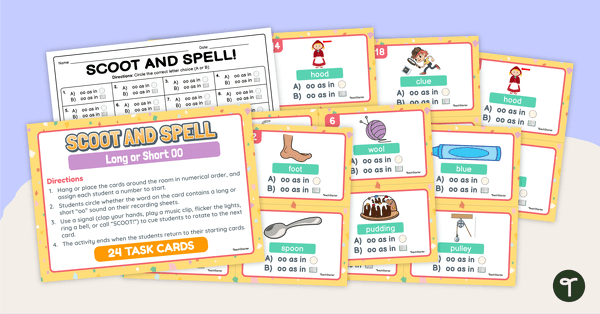
Words with OO - SCOOT! Task Cards
Identify the long and short "oo" sound in one- and two-syllable words with a game of SCOOT!
- Plus Plan
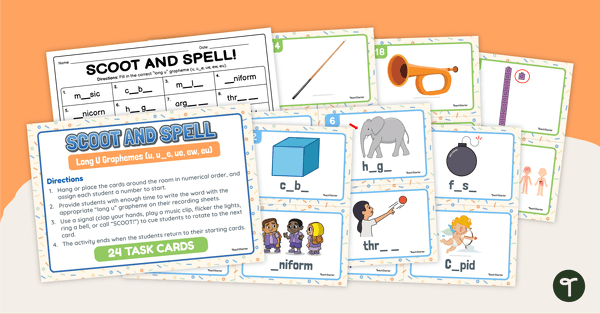
Spelling Long U Words - SCOOT! Task Cards
Explore words containing the “long u” sound with this active classroom game that will get your students moving!
- Plus Plan
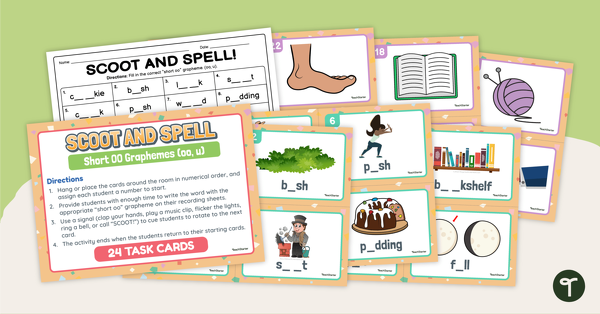
Spelling the Short OO Sound - SCOOT! Task Cards
Learn to spell words with OO sounds with this active short OO Scoot! Game
- Plus Plan
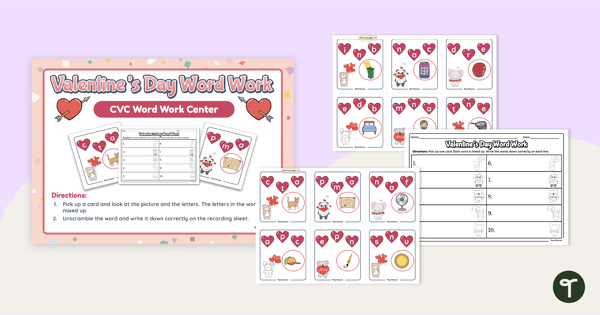
Valentine’s Day Printables - CVC Word Task Cards
Practice identifying, spelling, and reading CVC words with a Valentine’s Day Word Scramble activity.
- Plus Plan
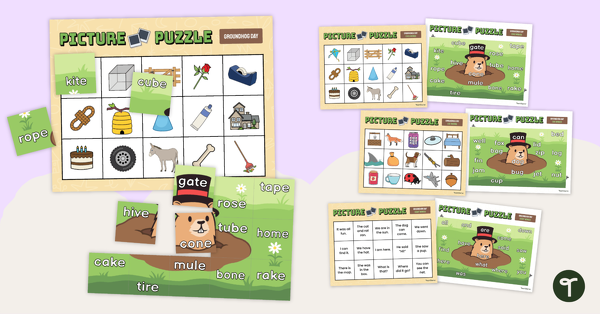
Groundhog Day Picture Puzzles - CVC, CVCe, and Sight Words
Identify and read CVC, CVCe, and grade-level sight words with a set of fun Groundhog Day themed picture puzzles.
- Plus Plan
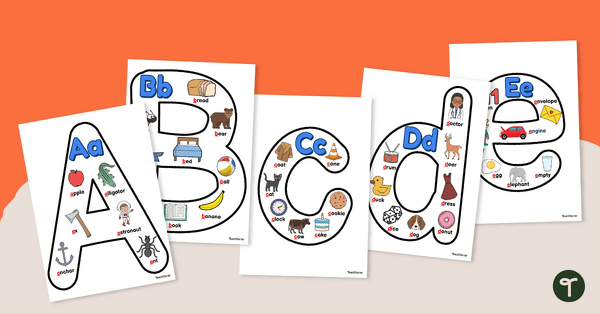
Alphabet Anchor Charts
Display these lowercase and uppercase letter posters with images that begin with each letter.
- Plus Plan
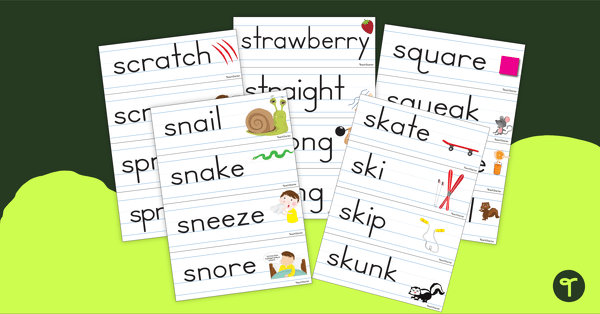
S Blend Words - Word Wall
Print and display S-blend words in your classroom with a printable set of 64 s-blend word cards.
- Plus Plan
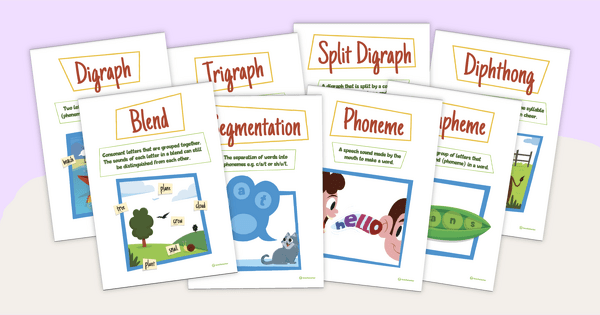
Phonics Vocabulary Poster Pack
A set of 9 phonics vocabulary posters to help explain different terms.
- Plus Plan
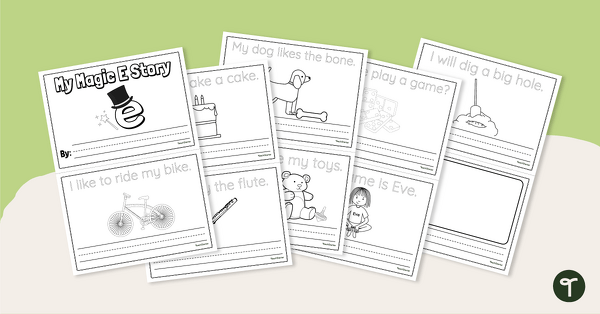
My Magic E Story - Silent E Words Mini-Book
Practice reading and writing sentences with silent e words with this magic e-mini-book.
- Plus Plan
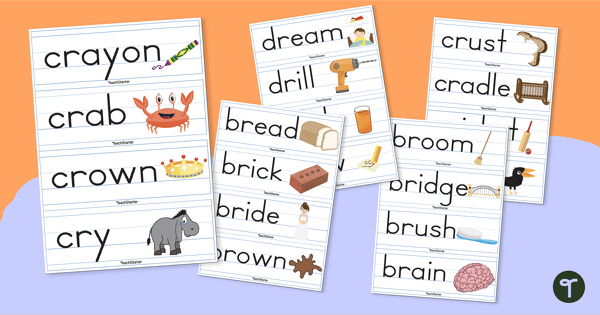
R-Blend Words - Printable Word Cards
Forty-eight R blend vocabulary cards for a word wall.
- Plus Plan
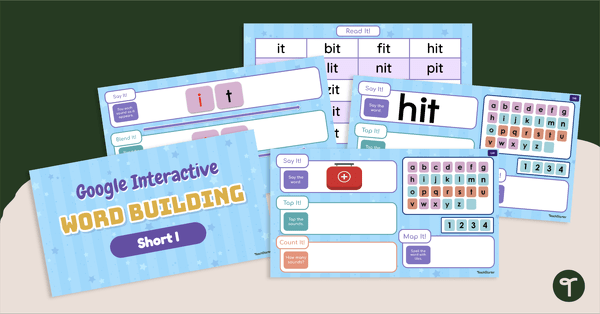
Learn to Read Short I - Daily Phonics for Kids
Teach your students to read short I words with a daily digital phonics instructional slide deck.
- Plus Plan
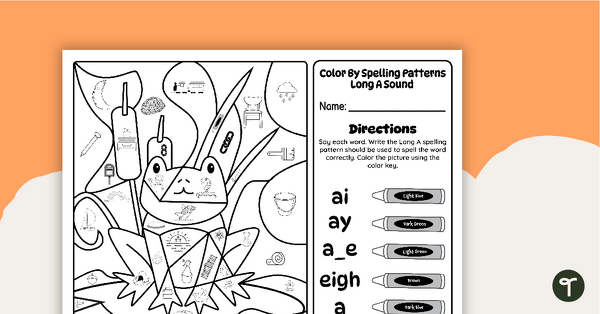
Color By Long A — 2nd Grade Spelling Pattern Worksheet
Invite spring into the classroom and learn long A spelling patterns with a color by code worksheet for 2nd grade.
- Plus Plan
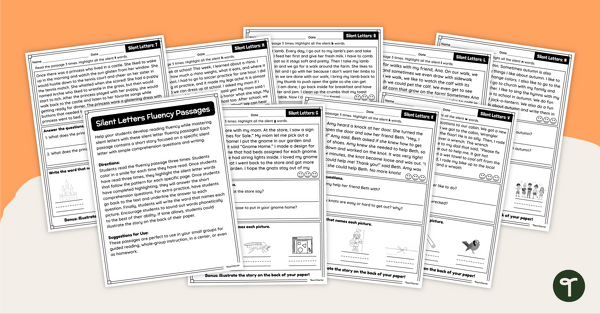
Silent Letter Words - Reading Fluency Worksheets
Practice identifying the silent letters in words with this comprehensive collection of reading fluency passages.
- Free Plan
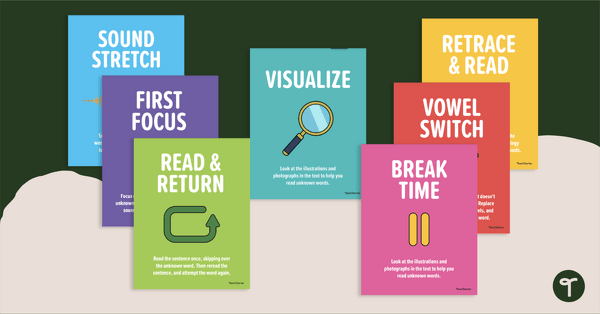
Decoding Strategy Poster Pack
Display different decoding strategies in the classroom with this printable poster pack.
- Plus Plan
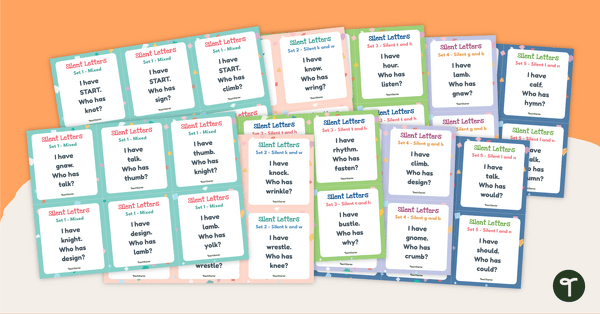
I Have, Who Has? Game - Silent Letters
Review silent letters in one- and two-syllable words with this whole-class literacy game.
- Plus Plan
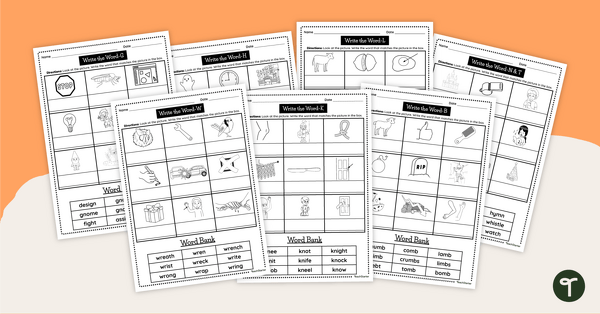
Silent Letters Worksheets - Word and Picture Match Up
Explore one and two-syllable words with silent letters with this set of 7 skill-targeted worksheets.
- Plus Plan
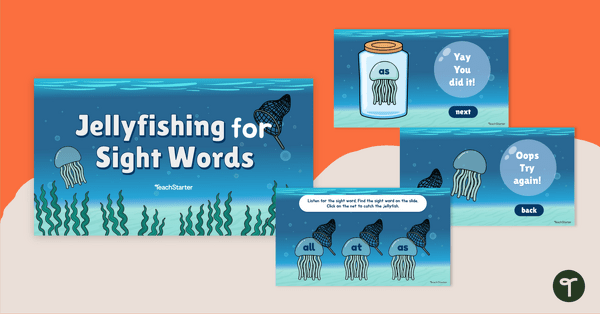
Jellyfishing for Sight Words - Kindergarten Sight Word Game
Go jellyfishing for Kindergarten Dolch words with an interactive Google Slides game!
- Plus Plan
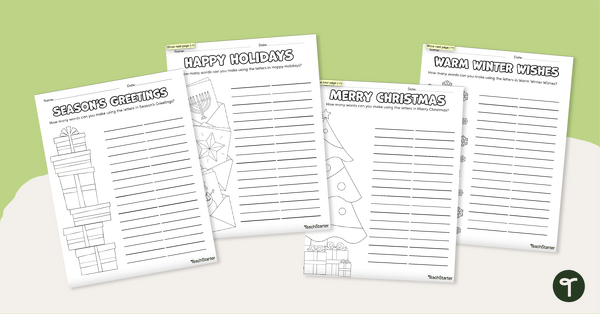
Holiday and Christmas Anagram Worksheets
Spice up your word study centers with a holiday-inspired set of anagram worksheets.
- Plus Plan
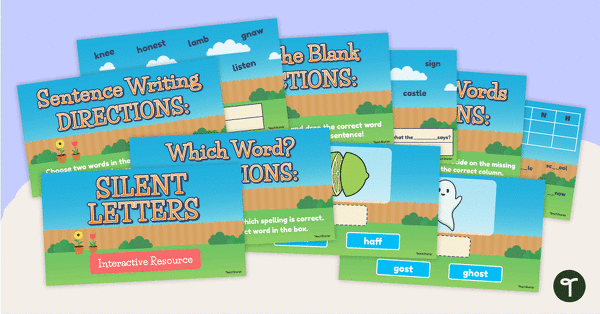
Silent Letters Interactive Activity
Explore silent letters in one- and two-syllable words with this interactive spelling activity.
- Plus Plan
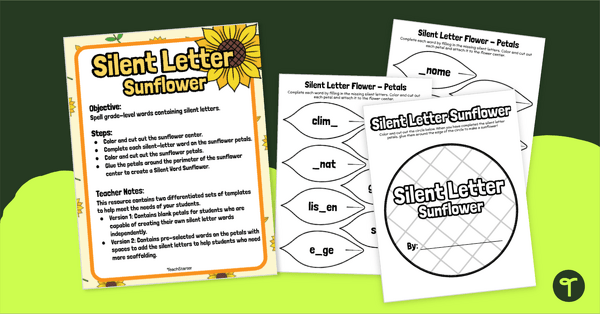
Silent Letter Words - Sunflower Craft
Explore silent letters in a new and unusual way with this creative craft activity.
- Plus Plan
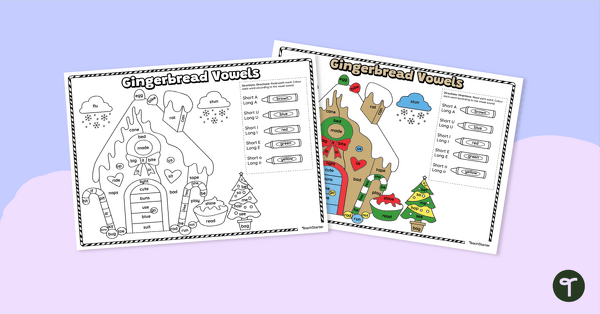
Gingerbread Vowels - Printable Vowels Worksheets
Use coloring and Christmas to engage your students with printable long and short vowel worksheets like these!
- Plus Plan
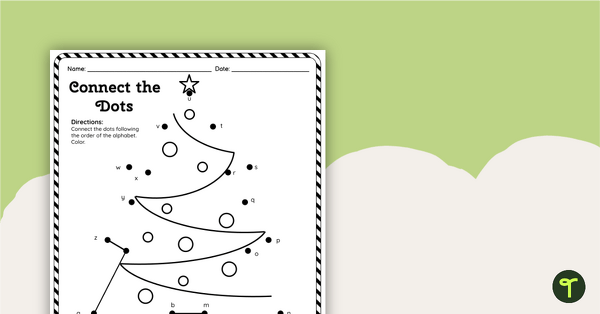
Christmas Connect the Dots Printables - Alphabet
Practice ordering the alphabet by connecting the dots on printable Christmas dot-to-dot worksheets.
- Plus Plan
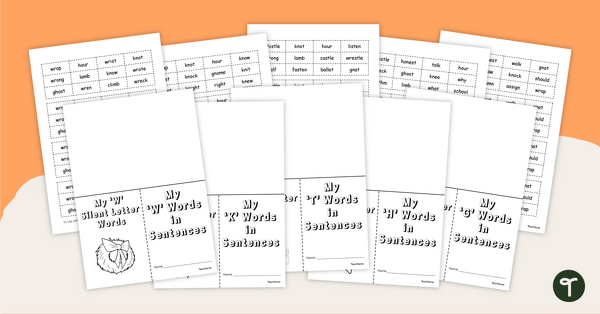
Silent Letter Flap Books
A great worksheet alternative to help your students identify silent letters in words.
- Plus Plan
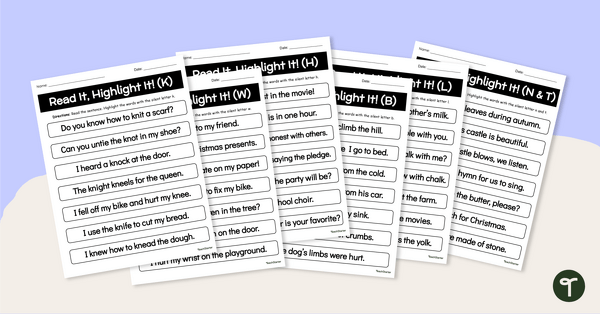
Words with Silent Letters - Worksheets
Identify silent letters in words with this set of six decoding worksheets.
- Plus Plan
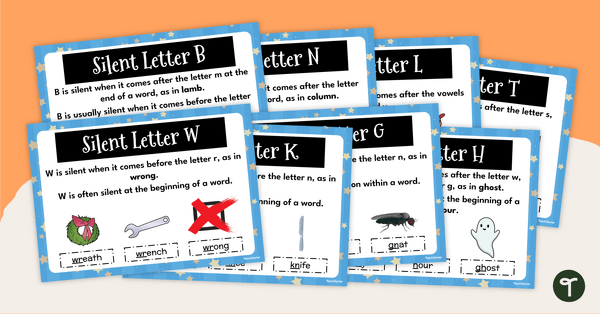
Words With Silent Letters Poster Pack
Remind your students about the most commonly used silent letters with this set of classroom display posters.
- Plus Plan
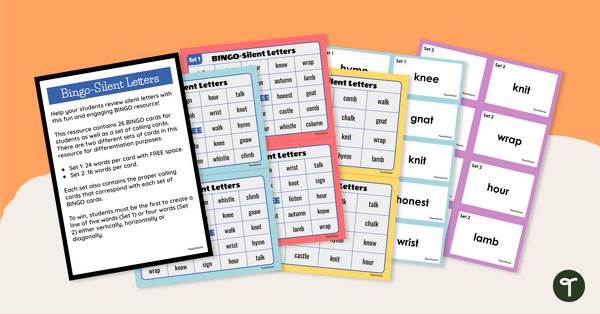
Silent Letter Bingo - Ghost Letters
Help students master silent letters (also known as ghost letters) with this engaging game of Bingo.
- Plus Plan
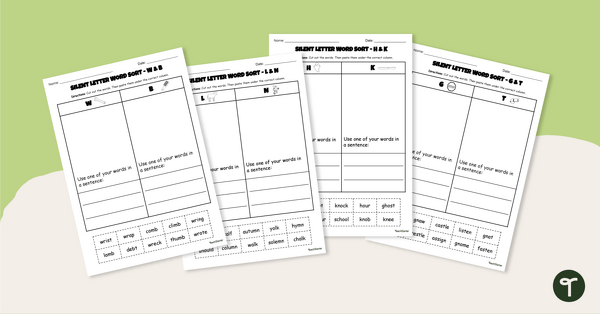
Silent Letters Word Sort - Cut and Paste Worksheets
Identify silent letters in words with this set of four cut-and-paste worksheets.
- Free Plan
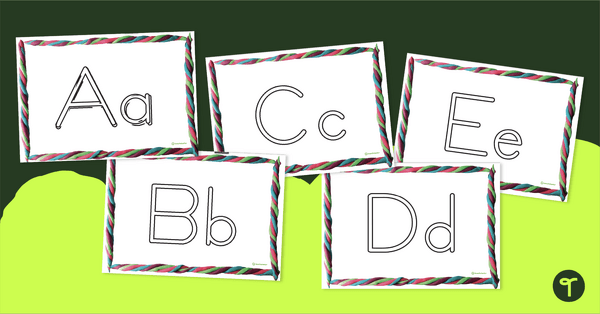
Alphabet Playdough Mats for Fine Motor Development
A set of alphabet playdough letter mats to help children develop their fine motor skills and identify the letters of the alphabet.